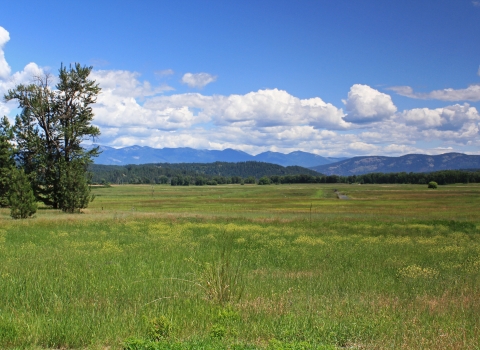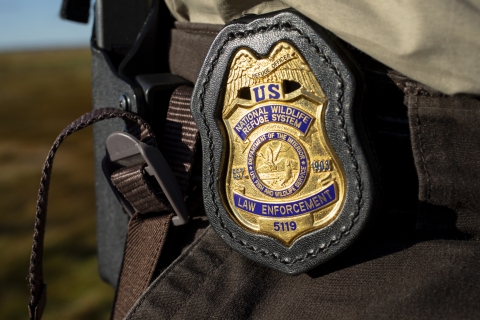What We Do
Refuges use a wide range of land management tools based on the best science available. Some refuges use prescribed fires to mimic natural fires that would have cleared old vegetation from the land helping native plants regenerate and local wildlife to thrive. Other refuges contain Wilderness areas where land is managed passively. The management tools used are aimed at ensuring a balanced conservation approach where both wildlife and people will benefit. At this field station our conservation toolbox includes: native plant enhancements, grassland management, and cropland management.
Our goal is to conserve, enhance and restore native forest, riparian riparian
Definition of riparian habitat or riparian areas.
Learn more about riparian , stream and wetland habitats and the fish, wildlife and plants that live here.
Management and Conservation
The current management priority of the Refuge is to provide spring and fall migration habitat for migratory waterfowl, and to provide breeding habitat for waterfowl and other waterbirds. Habitat management would also benefit raptors, migratory landbirds, and shorebirds.
Integrated Waterbird Management and Monitoring --An integrated waterbird management and monitoring program has been implemented on the refuge. As part of the IWMM approach, managers and scientists are working together to develop integrated monitoring protocols, decision support models, and a database that will inform waterbird management decisions at multiple spatial scales. These products will support clear and transparent decision making processes with respect to waterbird habitat management. IWMM is the only landscape scale monitoring effort developed to date that tracks and links waterbird habitat use, habitat conditions and management actions during the migration and wintering periods.
Moist Soil Management—Some techniques for moist soil management include water level monitoring and control to foster desired plant growth. Appropriate water depths are important for effective waterfowl management. Management of seasonal wetlands is valuable for producing emergent wetland vegetation that is a primary food resource for wintering waterfowl. These wetlands are generally slowly drawn down through the spring and summer, with the intent of creating moist soil areas where the seeds of annual emergent plants, such as millet and smartweed, can germinate. Once these plants are mature, the basins are reflooded. Prescribed burning, mowing, discing, bio-control insect releases, and seeding are also some of the techniques used to help native plants recover in these moist soils.
Integrated Pest Management—This approach is used to control and eradicate invasive and non-desirable plants using mechanical, chemical and biological control methods.
Our Projects and Research
Project sponsors are proposing to restore floodplain connectivity to the Kootenai River historic floodplain within the Kootenai National Wildlife Refuge by breaching levees, raising refuge and county roads, replacing water control structures, and enhancing 830 acres of riparian and wetland habitats.
Project LocationKootenai NWR is 5 miles east of Bonners Ferry,...
Law Enforcement
Protecting resources and people on our refuges is the fundamental responsibility of refuge officers. The mission of the Refuge Law Enforcement Program is to support the administration of the National Wildlife Refuge System through the management and protection of natural, historic and cultural resources, property, and people on lands and waters of our national wildlife refuges.
Laws and Regulations
U.S. Fish and Wildlife service law enforcement officers have a wide variety of duties and responsibilities. Officers help visitors understand and obey wildlife protection laws. They work closely with state and local government offices to enforce federal, state and refuge hunting regulations that protect migratory birds and other game species from illegal take and preserve legitimate hunting opportunities.




